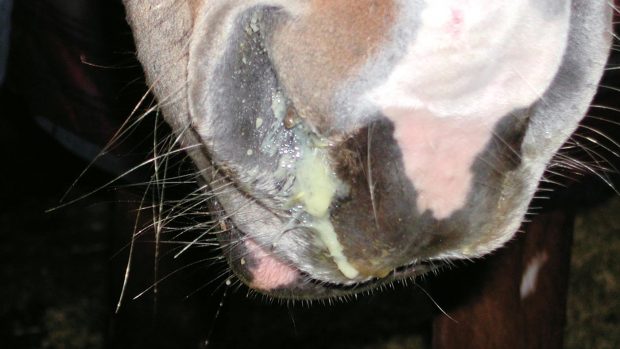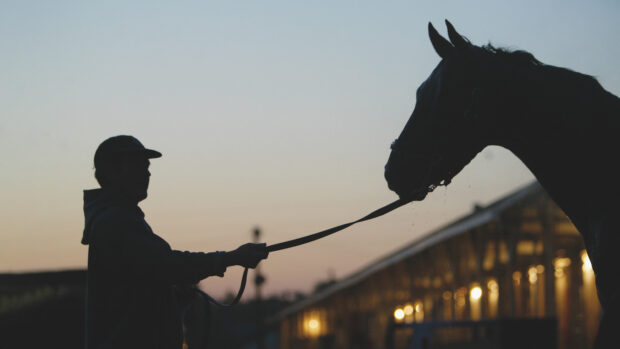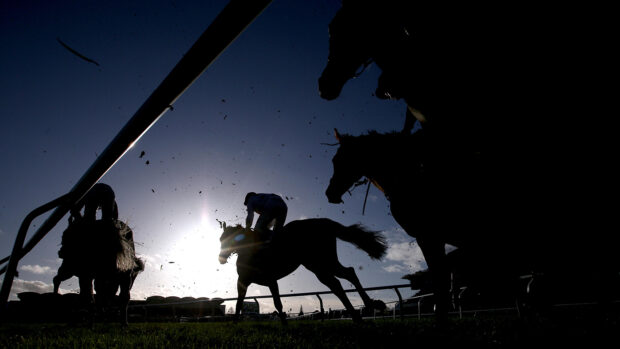James Darlington, who has died aged 67, was one of Somerset’s widely known and much-loved characters, best described as a countryman and skilled horseman. He was an amateur rider, professional jump jockey and then farrier. Throughout his life he loved his driving horses and horse-drawn vehicles.
James was born in Harpenden, Herts, in 1956. In that year, with a car, caravan and two ex-army tents, the family took to the road, leaving behind the security of a tiled roof.
This excursion took them to the Lake District, then south to Dorset where James’s father had secured a job. Clearly, these early peripatetic experiences had a profound influence on what was to become James’s chief delight: travelling the open road with horse and wagon.
An early photograph of James shows a freckled three-year-old astride a hobby horse. He appears completely in charge; as later he tended to be, irrespective of the nature of the steed.
The arrival of the family at South Cadbury in Somerset allowed James to move on to the real thing. As the sole horse-loving member of the family, James soon found like-minded people in The Pony Club.
He also acquired a horse and trap, quietly and resolutely. This approach was to become characteristic in building the life he envisaged, repeating itself in acquiring his beloved house, yard, land and wagons, and when achieving his aims of becoming jockey and farrier.
Knowing something about horses led James to training in stable management, then work as a stable lad, but he really wanted to race. He started finding mounts for local point-to-points, leading in 1975 to his first placed ride.
His successes at amateur steeplechases were such that by the time he was 18 he knew he wanted to race professionally. His first amateur win was on 2nd March 1977 then, two days later, his first winner under Rules; 1977 was a winning year and a brilliant start to James’s racing career.
His successes continued with John Edwards as his assistant, then with Milton Bradley. Following a serious arm injury he moved to Les Kennard at Bagborough at the beginning of the 1979 season.
On Saturday 6 December 1980, on Ballybutler, he “soared to great heights” when in first place Ballybutler blundered over the last fence and James was launched vertically. The image showing a good three feet between him and the saddle must take the record for the most published photo of a horse that didn’t win.
James was too big to be a Flat racer, and too heavy to jump over the sticks. As a result he was always on a diet and always hungry. His entire career as a jockey was characterised by the fact that his quiet authority with difficult horses was such that he was given difficult horses to ride: not the easiest route to the winner’s enclosure.
In 1983, James recognised that that big fall was waiting for him, so he decided to become a farrier. Training in the UK was oversubscribed and challenging, so James found himself a master in Ivor Winters, south of Dublin.
As a journeyman farrier, James returned home to find a shoeing patch, centred on Crewkerne, Somerset. His preference was for shoeing lighter animals, which led to his specialising in shoeing racehorses: an obvious choice for an ex-jockey, where his understanding of race horses and the racing world allowed him to contribute to many famous successes. It was also a choice that would help preserve the farrier’s back. This stratagem worked, because James never stopped shoeing, notwithstanding contributing materially to the economic wellbeing of local chiropractors and osteopaths.
Additionally, for his entire career he shod horses for the British triathlon team. Next to the thoroughbreds he preferred shoeing ponies and of course the big cob, with a preference for the odd-coloured horses who would become his companions. Many people will remember his first big horse Scammell, hitherto used for pulling a Steptoe & Son tradesman’s cart. A further mention should be given to James’ other cobs; Jack, Domino, Sam, William and Clyde, and most recently Gunner.
Aside from farriery, James’s interest lay in his horses and the gypsy wagons that they pulled, and – true Englishman that he was – a patch of England of his very own. This resulted in a move to Merriott and purchase of a house formerly belonging to Old Frankie Parker.
It became James’s real home, which allowed him to develop the lifestyle he’d always wanted; complete with dog, chickens and a succession of horses to pull his growing collection of wagons, and the endless stream of visitors. It was the place to which Louise would come, bringing her daughter Niamh.
James had always found the company of children a pleasure; and they loved him. The rather gentle, quiet and unfussy ways that he had with horses made him, equally, a magnet for children, who adored him. Although coming to him at the age of three, Niamh truly became his daughter and in 2000 William was born, completing the quartet.
This was an old-fashioned country life, lived slowly, frugally, rooted in quite simple things, not much in the way of modern trappings: his car and van pretty much as make-do as his clothes. What a contrast this was to his days of competition, but he was a man of polarities.
Known for the way he could spin a yarn and keep his audience in stitches, James seemed to have an unlimited store of funny stories, all garnered from his own experience. Always a great guest, he was as much at home as a raconteur at the dinner table as he was presiding at the side of the campfire. Both out on the road and at home in Merriott, one could always be assured of a warm welcome.
His friends were as diverse as they were widespread, a fact no better illustrated than when parked on some verge “’somewhere in England”, when the first to turn up would be a high-ranking policeman of long-time acquaintanceship, the second a recently released prison inmate bearing a brace of scrumped swedes and the third that ubiquitous someone who always came to see him when he stopped at that spot at that time of year.
It is the image of James by the campfire that will be most familiar and abiding to many, sitting there with stick in hand arranging the logs, dog by his side, blackened kettle steaming gently, and in the background a gypsy wagon, as his odd-coloured horse placidly pulls at the grass.
James was accomplished, quiet, kind, courageous and funny. He was a real family man, as important to his children as he was to his parents, his brothers, his nephews and nieces, the myriad of small near or distant cousins of various generations and his many friends and way-side acquaintances. He leaves his daughter Niamh, son William and grandson Nolan.
Horse & Hound magazine, out every Thursday, is packed with all the latest news and reports, as well as interviews, specials, nostalgia, vet and training advice. Find how you can enjoy the magazine delivered to your door every week, plus options to upgrade your subscription to access our online service that brings you breaking news and reports as well as other benefits.





